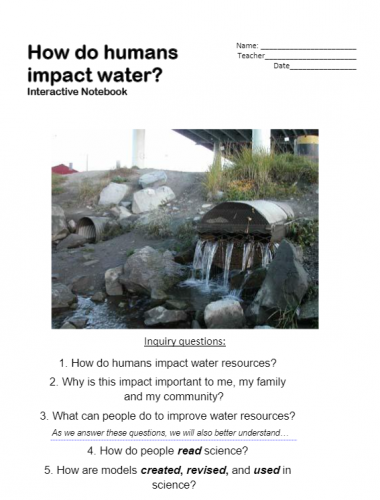This module supports grade 8 students’ close reading, modeling, explanation, and argumentation practices in science while building their knowledge of water resources and pollution. The water investigation materials include an interactive notebook with integrated routines, scaffolds, and tasks, and a set of texts presenting engaging articles, photos, diagrams, data, and science principles. The accompanying carbon cycle pre/post assessment can be used to measure students’ close reading and modeling progress. The water investigation may be used with the Reading Models module and the middle school MRSA investigation to provide more extensive opportunities to learn. See Curriculum Modules #24, #25, and #30.
Curriculum
Life Sciences, Grade 9
This module supports science students’ close reading, modeling, explanation, and argumentation practices while building their knowledge of evolution, microbes, and antibiotic resistance. The MRSA investigation materials include an interactive notebook with integrated routines, scaffolds, and tasks; a set of texts presenting engaging news stories, data, and science principles; an annotated teacher guide; and additional supports for science discourse and argumentation. The high school MRSA investigation may be used subsequent to the Reading Science Models module and the Homoeostasis investigation to provide more extensive opportunities to learn.
Life Sciences, Grade 6
This module supports grade 6 students’ science close reading, modeling, explanation, and argumentation practices while building students’ knowledge of evolution, microbes, and antibiotic resistance. The MRSA investigation materials include an interactive notebook with integrated routines, scaffolds, and tasks, and a set of texts presenting engaging news stories, data, and science principles. The accompanying lice pre/post assessment can be used to measure students’ close reading and modeling progress. The middle school MRSA investigation may be used with the Reading Models module and the Water investigation to provide more extensive opportunities to learn.
Reading Apprenticeship Academic Literacy (RAAL) Curriculum
2003
The Reading Apprenticeship team at WestEd is updating RAAL with support from a 2024-2028 EIR grant. The grant project includes designing, piloting, and evaluating the effectiveness of RAAL with 8th and 9th graders in multiple states.
The current RAAL curriculum will only be available to existing clients during this period.
We will post announcements on our website and WestEd.org as the updated Academic Literacy curriculum becomes available.
If you are interested in participating in the EIR grant-supported design and research, or in ordering the current RAAL materials, please contact Diane Lee, [email protected].
You can get started with Reading Apprenticeship by engaging in our professional learning, reading our book, and utilizing free curriculum resources designed by teachers.

